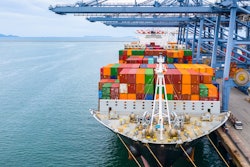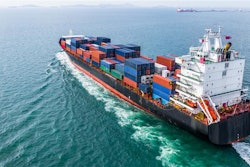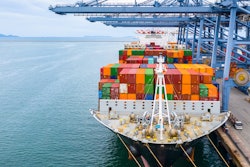
Global supply chains have been reeling over the past 18 months, battered by a tangled web of pandemic restrictions and re-openings, drastic changes in consumer spending behaviors, labor shortages and a whirlwind of related events. This perfect storm of supply chain volatility has forced both businesses and consumers to navigate price hikes, delays and what feels like a constant shortage of goods and pushed the White House to announce a new plan aimed at increasing capacity with leading carriers and at major ports in California.
While the action from the White House is a step in the right direction, for many supply chain leaders, the next few months will be a true test of resilience. And, heading into what is arguably the busiest season for commerce, agility in analysis, planning and execution will be critical in helping business and supply chain leaders weigh business tradeoffs, such as costs, shipping and prioritization in one of the most critical periods of the year.
New levels of volatility, uncertainty and change
It's true that shocks to the supply chain aren’t uncommon; just think of the volatility that resulted from Brexit. But, the pace and type of disruption witnessed today is unparalleled and has laid bare many of the risks associated with our traditional way of supply chain operations.
Take the port congestion and capacity crisis as an example.
Earlier in the summer, pandemic-related port and manufacturing shutdowns in goods producing economies – like China and Southeast Asia – delayed production and outbound shipping, which created a production crunch right as consuming economies were placing large holiday orders. These shutdowns also led to a major delay in “dwell time”– the time a ship spends waiting to dock – at many major ports around the world, which in turn led to a ripple of delays across the transportation sector as ships sat idle in ports. Coupled with last year’s container shortage, there was now a mismatch in the location and quantity of containers available to ship goods, driving the cost of containers and associated logistics expenses to record highs around the world.
Withstanding requires stronger data and more agile plans.
The extent of this port-related disruption and the significant upheaval and re-allocation of resources it’s caused globally proves just how fragile the traditional approach to supply chain management, inventory and manufacturing can be in times of unprecedented disruption.
Businesses that rely on the delivery of goods and services, like toy, electronics and auto manufacturers, are dependent on a smooth supply chain to operate profitably. If goods are stranded at ports around the world, those businesses are left without the ability to realize revenues at a time when they are likely already paying higher premiums for raw materials, labor, and transportation. This is another, likely hidden, reason behind the recent uptick in inflation, and one that is more stubbornly difficult to address.
With supply chain impacting anywhere from 65-80% of a company’s P&L statement, it’s clear that this just-in-time thinking aimed at driving down costs may be too exposed and at risk for the disruption witnessed today.
Instead, supply chain leaders should focus to build resiliency against future shocks so that their supply chain becomes a center of competitive advantage. This requires a focus on the cross-connected implications of operational decisions on financial outcomes; a new appreciation for real time data analysis and scenario modeling capabilities; and contextual collaboration both internally within departments, as well as real time with suppliers and customers, to make and act on the best decisions in the moment. Greater visibility across the entire supply chain can help leaders think farther into the future when it comes to critical operational decisions, like predicting demand and associated capacity, aligning those decisions with the resources needed to meet that demand and to shape it with advanced commercial strategies to optimize the organization’s cashflow.
This will also help supply chain leaders answer the short-term questions that will define their ability to pivot strategically in the face of continued delays, backlogs, or shortages: “Can I afford to change my lane to air or train?”, “Can I pool risk with other companies to gain preferential pricing?”, “How quickly can I change - perhaps I buy my own container, send my cargo to another port, or enlist a supplier in a less congested location?” “How quickly can I share changes in orders with suppliers and partners, so they have real time order visibility and can make better shipping decisions?”
Days of disruption are not over
The past year has made one thing very clear – supply chain is a critical foundation to business operations. As seen with the port and capacity crisis and the impact it has had on major brands around the world, supply chain risks and constraints are truly business risks and constraints, and conversations around risk, spend, capital and labor are now more critical than ever to a company’s bottom line.
For today’s supply chain leaders, the real action lies in the approach. With stronger data and scenario planning capabilities, supply chain leaders can answer critical questions, make strategic decisions and help their organizations meet supply chain disruption with agility and resilience, today and in the future.




















